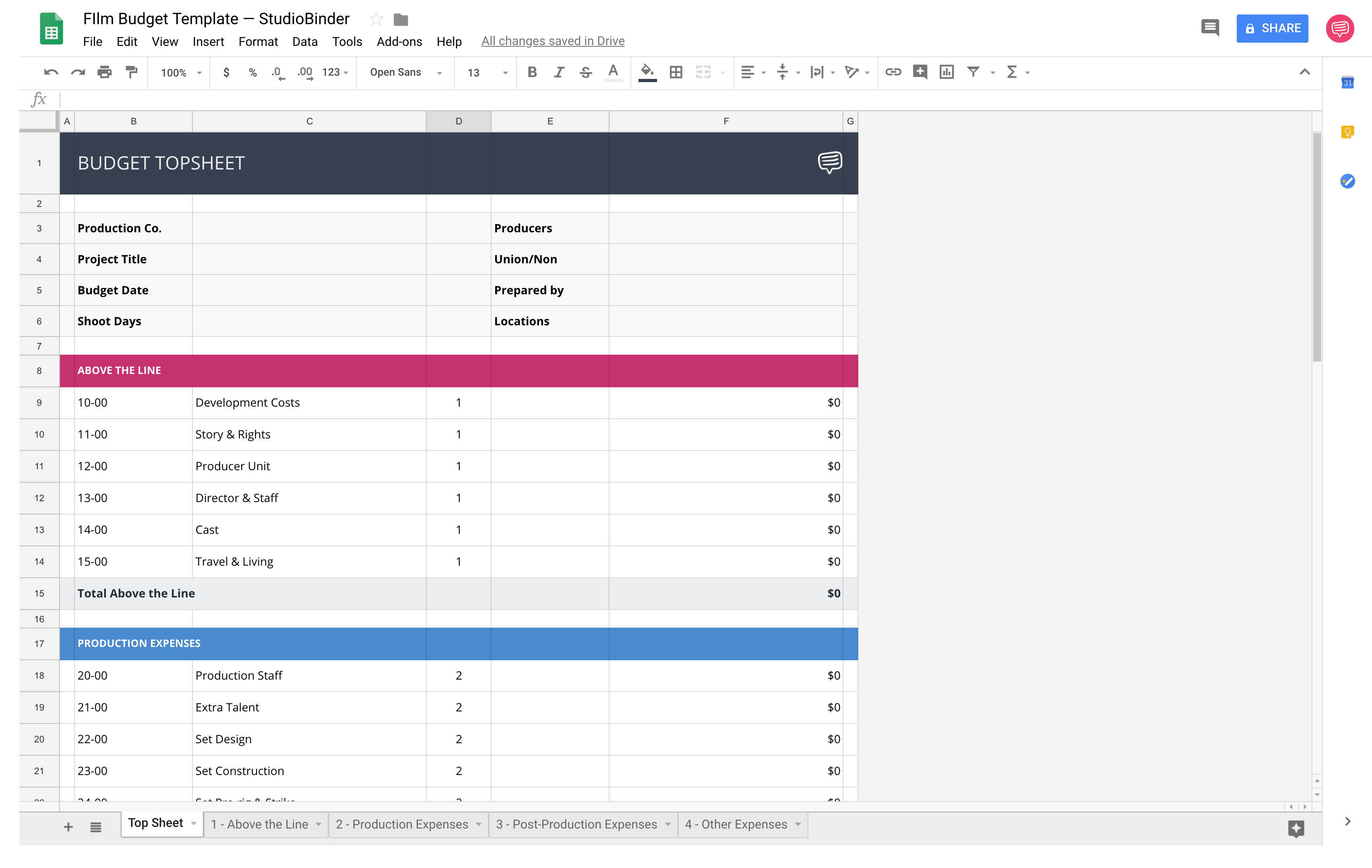

- #FREE BUDGET SOFTWARE FILM MANUAL#
- #FREE BUDGET SOFTWARE FILM FREE#
Your dining, travel, clothing (beyond the basics), subscriptions and memberships are variable costs.

Examples of fixed costs are rent, utility bills, transportation, insurance, food and loan payments.
Label the monthly expenses as fixed or variable: Go through your list of monthly expenses and now label each as a fixed (essential items) or variable cost (nonessential items). Also include in this category your savings contributions, such as in a 401(k) or high-yield savings account. Common monthly expenses include rent or mortgage payments, utility bills, loan payments, insurance costs, transportation, child care, groceries, dining, household goods, travel, streaming subscriptions and memberships. List your monthly expenses: Next, you want to look at your monthly costs (your cash outflow). Your net income is the amount of money you earn after taxes and can be found on the pay stub you receive through your employer. Calculate your net income: First, find out how much money you make each month (your cash inflow). Making a budget can be done in as little as five steps: Security features include 256-bit bank grade encryption in a secure data center. App plans to launch a pandemic-inspired feature allowing people to prioritize “envelopes” based on their most urgent expenses, such as housing, utility bills, etc. App offers educational resources like a blog, a podcast and online courses people can take. App provides real-time updates of how your transactions impact your budget and personalized reports. #FREE BUDGET SOFTWARE FILM MANUAL#
Requiring manual entry of data helps users to really analyze their spending habits versus it being automated (users can also download their recent activity from their bank’s website and import that into Goodbudget). Users can customize the envelope categories according to their needs, such as saving for an emergency fund or a vacation. Envelope feature allows user to visualize their spending and prioritize meeting different goals. #FREE BUDGET SOFTWARE FILM FREE#
Free to use for creating 20 envelopes, one account user on up to two devices, one year of transaction history, debt tracking and community support. If that's exactly what you're looking for, you can download your free template below. This category includes all costs related to promotion, insurance, distribution, legal fees or overtimes. vehicles, props, studios or even generators. Make sure you set aside some money that you can use to rent camera equipment and accessories, or anything else you might need on set. In the post-production, you'll need to count with budget for the film edit, sound edit, special or visual effects. 
In the production part, you'll find all labor and staff budget, locations, permits, vehicles, travel, equipment, props, set prep, construction and design or wardrobe and hair and make-up. BTL (Below-the-line)īTL includes production and post-production budget expenses. This category includes the prep stage, and accounts for talent, and crew generally involved in development phase as writers, producers, director, art director, casting crew, choreographer, technicians and more. In the latter sheets you'll find very detailed budgets of each part of the filming: prep, production and post-production. In the preliminary section you'll find a quick and short budget if you're in a hurry. This fully customisable template should have you covered in all situations. Always, remember to plan for enough budget for overtimes or "things-go-wrong" situations. Don't forget the budget will differ for each specific project and for all genres as for some feature films you might need more money for costumes and make-up and for other films as documentaries, more money for travel and logistics.







 0 kommentar(er)
0 kommentar(er)
